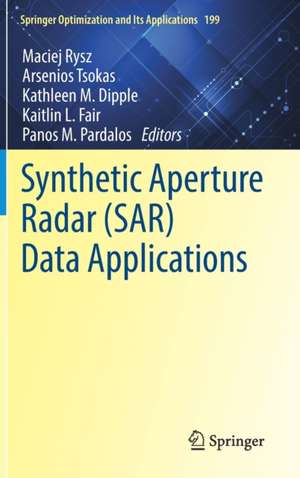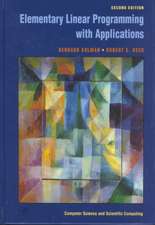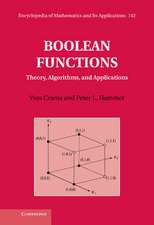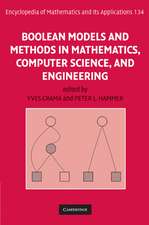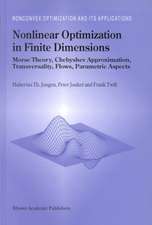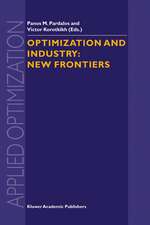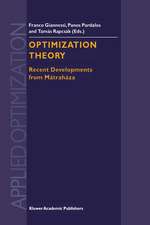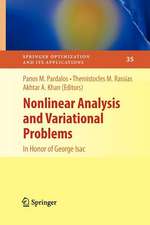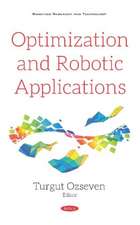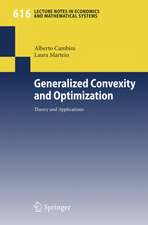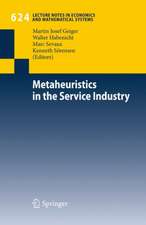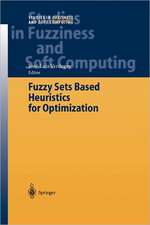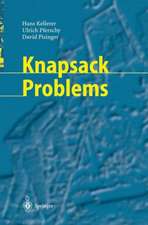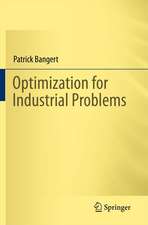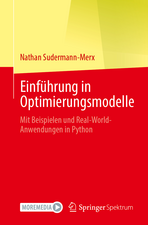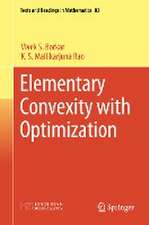Synthetic Aperture Radar (SAR) Data Applications: Springer Optimization and Its Applications, cartea 199
Editat de Maciej Rysz, Arsenios Tsokas, Kathleen M. Dipple, Kaitlin L. Fair, Panos M. Pardalosen Limba Engleză Hardback – 19 ian 2023
| Toate formatele și edițiile | Preț | Express |
|---|---|---|
| Paperback (1) | 780.82 lei 6-8 săpt. | |
| Springer International Publishing – 20 ian 2024 | 780.82 lei 6-8 săpt. | |
| Hardback (1) | 786.84 lei 6-8 săpt. | |
| Springer International Publishing – 19 ian 2023 | 786.84 lei 6-8 săpt. |
Din seria Springer Optimization and Its Applications
- 15%
 Preț: 642.00 lei
Preț: 642.00 lei - 15%
 Preț: 664.61 lei
Preț: 664.61 lei - 18%
 Preț: 961.55 lei
Preț: 961.55 lei - 17%
 Preț: 360.79 lei
Preț: 360.79 lei - 13%
 Preț: 458.08 lei
Preț: 458.08 lei -
 Preț: 336.79 lei
Preț: 336.79 lei - 18%
 Preț: 787.91 lei
Preț: 787.91 lei - 17%
 Preț: 397.79 lei
Preț: 397.79 lei - 8%
 Preț: 337.37 lei
Preț: 337.37 lei - 18%
 Preț: 1133.30 lei
Preț: 1133.30 lei - 15%
 Preț: 646.43 lei
Preț: 646.43 lei - 15%
 Preț: 647.40 lei
Preț: 647.40 lei -
 Preț: 400.47 lei
Preț: 400.47 lei -
 Preț: 379.86 lei
Preț: 379.86 lei -
 Preț: 383.90 lei
Preț: 383.90 lei -
 Preț: 388.48 lei
Preț: 388.48 lei -
 Preț: 546.26 lei
Preț: 546.26 lei - 15%
 Preț: 647.40 lei
Preț: 647.40 lei -
 Preț: 390.25 lei
Preț: 390.25 lei - 15%
 Preț: 649.87 lei
Preț: 649.87 lei - 24%
 Preț: 611.55 lei
Preț: 611.55 lei - 18%
 Preț: 972.62 lei
Preț: 972.62 lei - 20%
 Preț: 585.91 lei
Preț: 585.91 lei - 15%
 Preț: 710.09 lei
Preț: 710.09 lei - 18%
 Preț: 742.61 lei
Preț: 742.61 lei - 15%
 Preț: 658.22 lei
Preț: 658.22 lei - 15%
 Preț: 659.02 lei
Preț: 659.02 lei - 18%
 Preț: 745.15 lei
Preț: 745.15 lei - 15%
 Preț: 705.34 lei
Preț: 705.34 lei
Preț: 786.84 lei
Preț vechi: 959.56 lei
-18% Nou
Puncte Express: 1180
Preț estimativ în valută:
150.56€ • 157.52$ • 125.07£
150.56€ • 157.52$ • 125.07£
Carte tipărită la comandă
Livrare economică 02-16 aprilie
Preluare comenzi: 021 569.72.76
Specificații
ISBN-13: 9783031212246
ISBN-10: 303121224X
Pagini: 278
Ilustrații: X, 278 p. 124 illus., 91 illus. in color.
Dimensiuni: 155 x 235 mm
Greutate: 0.58 kg
Ediția:1st ed. 2022
Editura: Springer International Publishing
Colecția Springer
Seria Springer Optimization and Its Applications
Locul publicării:Cham, Switzerland
ISBN-10: 303121224X
Pagini: 278
Ilustrații: X, 278 p. 124 illus., 91 illus. in color.
Dimensiuni: 155 x 235 mm
Greutate: 0.58 kg
Ediția:1st ed. 2022
Editura: Springer International Publishing
Colecția Springer
Seria Springer Optimization and Its Applications
Locul publicării:Cham, Switzerland
Cuprins
End-to-End ATR Leveraging Deep Learning (M. Kreucher).- Change Detection in SAR Images using Deep Learning Methods (Bovolo).- Homography Augmented Momentum Contrastive Learning for SAR Image Retrieval (M. Rysz).- Synthetic Aperture Radar Image Based Navigation Using Siamese Neural Networks (Semenov).- A Comparison of Deep Neural Network Architectures in Aircraft Detection from SAR Imagery (L. Chen).- Machine Learning Methods for SAR Interference Mitigation (Huang).- Classification of SAR Images using Compact Convolutional Neural Networks (Ahishali).- Multi-frequency Polarimetric SAR Data Analysis for Crop Type Classification using Random Forest (Mandal).- Automatic Determination of Different Soil Types via Several Machine Learning Algorithms Employing Radarsat-2 SAR Image Polarization Coefficients (E. Acar).- Ocean and coastal area information retrieval using SAR polarimetry (A. Buono).
Notă biografică
Maciej Rysz is currently an assistant professor at the Department of Information Systems & Analytics at the Farmer School of Business within Miami University. Prior to joining Miami University, he was a research assistant professor at the Industrial & Systems Engineering Department at the University of Florida and served as a postdoctoral research associate under the National Research Council of the National Academies. He received his Ph.D. in Industrial Engineering with emphasis on operations research from the University of Iowa in 2014. His research areas of interest include mathematical programming, machine learning, network science and encryption.
Arsenios Tsokas currently works as an analyst for Citibank, N.A. He received his B.Sc. in Mathematics from the Aristotle University of Thessaloniki in 2014. He received his Ph.D. degree in Industrial & Systems Engineering from the University of Florida in 2021. He has a diverse background including data science, optimization, and machine learning. He has worked on various topics, such as data analysis with applications in medicine and network science with applications on network robustness.
Kathleen M Dipple is currently a research scientist with the US Air Force Research Lab (AFRL). A first-generation undergraduate student, she earned her bachelor’s degree in Chemistry from Appalachian State University and received her Ph.D. from the Nanoscale Science program at the University of North Carolina at Charlotte. She completed her post-doctoral work holding a provisional patent in the Nature-Inspired Section at AFRL’s Munitions Directorate through the National Research Council Associateship Program.
Kaitlin Fair is a Systems Development Engineer working on guidance, navigation, and control technologies at the Air Force Life Cycle Management Center. Dr. Fair served as a Research Engineer and Team Lead at the Air Force Research Lab for ten years prior to serving in her current role, during which she received the SMART Scholarship and completed her PhD in Electrical Engineering from the Georgia Institute of Technology in 2017. Her research interests include efficient signal processing and algorithm development on brain-inspired (neuromorphic) engineering architectures.
Panos M. Pardalos is a distinguished Professor Emeritus of Industrial and Systems Engineering at the University of Florida. Additionally, he is the Paul and Heidi Brown Preeminent Professor in Industrial & Systems Engineering. He is also an affiliated faculty member of the Computer and Information Science Department, the Hellenic Studies Center, and the Biomedical Engineering Program. He is also the Director of the Center for Applied Optimization. Dr. Pardalos is a world leading expert in global and combinatorial optimization. His recent research interests include network design problems,optimization in telecommunications, e-commerce, data mining, biomedical applications, and massive computing. He has co-authored and co-edited more than 30 books, as well as publishing more than 600 journal articles and conference proceedings. Prof. Pardalos is a Fellow of AAAS (American Association for the Advancement of Science), Fellow of American Institute for Medical and Biological Engineering (AIMBE), and EUROPT. He is a Distinguished International Professor by the Chinese Minister of Education; Honorary Professor of Anhui University of Sciences and Technology, China; Elizabeth Wood Dunlevie Honors Term Professor; Honorary Doctor, V.M. Glushkov Institute of Cybernetics of The National Academy of Sciences of Ukraine; Foreign Associate Member of Reial Academia de Doctors, Spain; and Advisory board member of the Centre for Optimisation and Its Applications, Cardiff University, UK. He is also the recipient of UF 2009 International Educator Award; Medal (in recognition of broad contributions in science and engineering) of the University of Catani, Italy; EURO Gold Medal (EGM); Honorary Doctor of Science Degree, Wilfrid Laurier University, Canada; Senior Fulbright Specialist Award; University of Florida Research Foundation Professorship; and IBM Achievement Award.
Textul de pe ultima copertă
This carefully curated volume presents an in-depth, state-of-the-art discussion on many applications of Synthetic Aperture Radar (SAR). Integrating interdisciplinary sciences, the book features novel ideas, quantitative methods, and research results, promising to advance computational practices and technologies within the academic and industrial communities. SAR applications employ diverse and often complex computational methods rooted in machine learning, estimation, statistical learning, inversion models, and empirical models. Current and emerging applications of SAR data for earth observation, object detection and recognition, change detection, navigation, and interference mitigation are highlighted. Cutting edge methods, with particular emphasis on machine learning, are included. Contemporary deep learning models in object detection and recognition in SAR imagery with corresponding feature extraction and training schemes are considered. State-of-the-art neural network architectures in SAR-aided navigation are compared and discussed further. Advanced empirical and machine learning models in retrieving land and ocean information — wind, wave, soil conditions, among others, are also included.
Caracteristici
Provides a cohesive overview of state-of-the-art data-driven computational methods using SAR data Uses and tools employing ML, AI, SL and inversion methods in a series of SAR data applications Current applications of SAR data especially for earth observation and object detection and recognition
